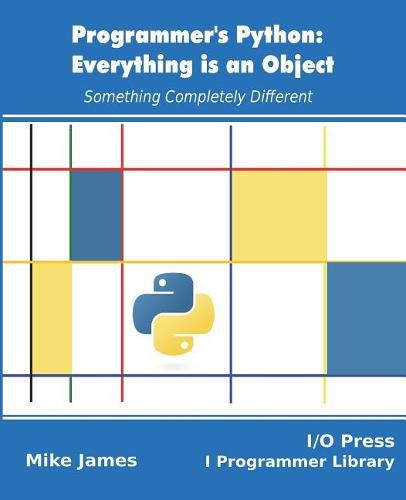Readings Newsletter
Become a Readings Member to make your shopping experience even easier.
Sign in or sign up for free!
You’re not far away from qualifying for FREE standard shipping within Australia
You’ve qualified for FREE standard shipping within Australia
The cart is loading…






A second edition is available: ISBN-13: 978-1871962741 This book sets out to explain the deeper logic in the approach that Python 3 takes to classes and objects. The subject is roughly speaking everything to do with the way Python implements objects. That is, in order of sophistication, metaclass; class; object; attribute; and all of the other facilities such as functions, methods and the many magic methods that Python uses to make it all work.This is a fairly advanced book in the sense that you are expected to know basic Python. However, it tries to explain the ideas using the simplest examples possible. As long as you can write a Python program, and you have an idea what object-oriented programming is about, it should all be understandable and, as important, usable. This is not a cookbook and there are no complete examples of real programs - that’s your assignment. This is also a focused book in the sense that there are large parts of Python it doesn’t cover. For example, it doesn’t deal with program structure, concurrency and data structures - these will be covered in companion volumes.
$9.00 standard shipping within Australia
FREE standard shipping within Australia for orders over $100.00
Express & International shipping calculated at checkout
Stock availability can be subject to change without notice. We recommend calling the shop or contacting our online team to check availability of low stock items. Please see our Shopping Online page for more details.
A second edition is available: ISBN-13: 978-1871962741 This book sets out to explain the deeper logic in the approach that Python 3 takes to classes and objects. The subject is roughly speaking everything to do with the way Python implements objects. That is, in order of sophistication, metaclass; class; object; attribute; and all of the other facilities such as functions, methods and the many magic methods that Python uses to make it all work.This is a fairly advanced book in the sense that you are expected to know basic Python. However, it tries to explain the ideas using the simplest examples possible. As long as you can write a Python program, and you have an idea what object-oriented programming is about, it should all be understandable and, as important, usable. This is not a cookbook and there are no complete examples of real programs - that’s your assignment. This is also a focused book in the sense that there are large parts of Python it doesn’t cover. For example, it doesn’t deal with program structure, concurrency and data structures - these will be covered in companion volumes.